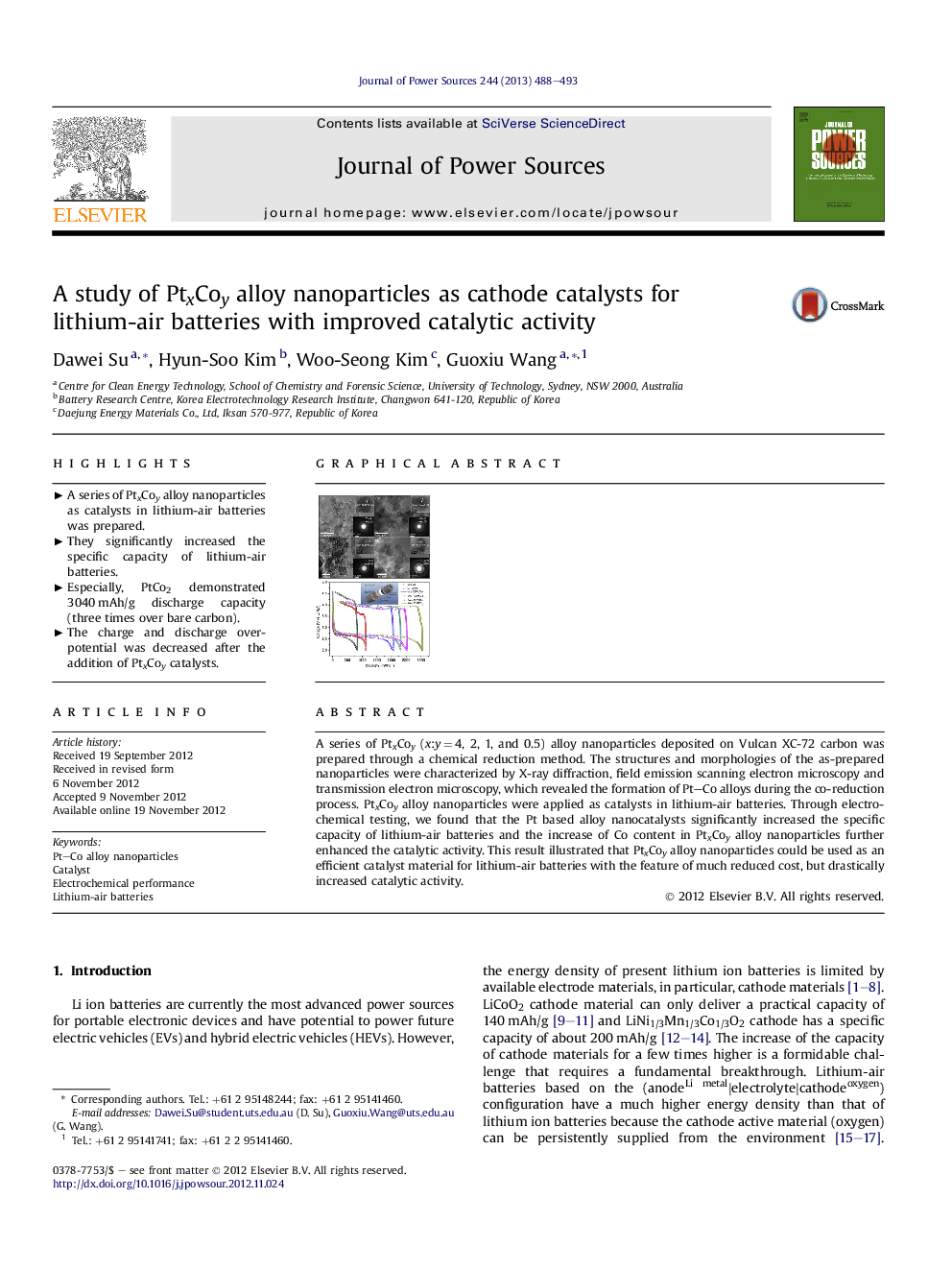| Article ID | Journal | Published Year | Pages | File Type |
|---|---|---|---|---|
| 1287503 | Journal of Power Sources | 2013 | 6 Pages |
A series of PtxCoy (x:y = 4, 2, 1, and 0.5) alloy nanoparticles deposited on Vulcan XC-72 carbon was prepared through a chemical reduction method. The structures and morphologies of the as-prepared nanoparticles were characterized by X-ray diffraction, field emission scanning electron microscopy and transmission electron microscopy, which revealed the formation of Pt–Co alloys during the co-reduction process. PtxCoy alloy nanoparticles were applied as catalysts in lithium-air batteries. Through electrochemical testing, we found that the Pt based alloy nanocatalysts significantly increased the specific capacity of lithium-air batteries and the increase of Co content in PtxCoy alloy nanoparticles further enhanced the catalytic activity. This result illustrated that PtxCoy alloy nanoparticles could be used as an efficient catalyst material for lithium-air batteries with the feature of much reduced cost, but drastically increased catalytic activity.
Graphical abstractTEM images of PtxCoy/Vulcan XC-72 carbon, (a) Pt4Co, (b) Pt2Co, (c) PtCo, and (d) PtCo2. And (e) is voltage–capacity curves of PtxCoy(x:y = 0, 4, 2, 1, and 0.5)/Vulcan XC-72 carbon electrodes (second cycle) in lithium-air cells. The inset of (e) is schematic diagram of the lithium-air test cell.Figure optionsDownload full-size imageDownload as PowerPoint slideHighlights► A series of PtxCoy alloy nanoparticles as catalysts in lithium-air batteries was prepared. ► They significantly increased the specific capacity of lithium-air batteries. ► Especially, PtCo2 demonstrated 3040 mAh/g discharge capacity (three times over bare carbon). ► The charge and discharge over-potential was decreased after the addition of PtxCoy catalysts.
